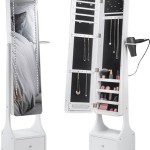How To Mirror Laptop to Sony Bravia TV Wirelessly
Wirelessly mirroring a laptop screen to a Sony Bravia TV offers a convenient way to share presentations, stream movies, or enjoy video games on a larger display. Several methods facilitate this wireless connection, each with its advantages and specific setup requirements. This article outlines the most common and effective methods for achieving this.
1. Miracast Screen Mirroring
Miracast is a widely adopted wireless display standard built into many modern laptops and Sony Bravia TVs. It allows for direct screen mirroring without the need for additional apps or hardware. To utilize Miracast, both the laptop and the TV must be Miracast-compatible.
To initiate Miracast mirroring, first ensure that the “Screen mirroring” feature is enabled on the Sony Bravia TV. This option is typically found within the TV's Network settings or Inputs menu. Then, on the Windows laptop, open the Action Center by pressing the Windows key + A. Click on the "Project" tile, and select "Connect to a wireless display." The laptop will then scan for available Miracast devices. Select the Sony Bravia TV from the list of discovered devices. The TV may display a PIN code for verification; enter this PIN on the laptop to establish the connection.
Troubleshooting Miracast issues can involve verifying that both devices support Miracast, checking for updated drivers on the laptop, and ensuring both devices are connected to the same Wi-Fi network. Some older laptops may require a Miracast adapter if the feature isn't built-in.
2. Using Google Chromecast
Google Chromecast is a small, affordable streaming device that plugs into the HDMI port of the Sony Bravia TV. While not strictly screen mirroring, Chromecast allows for casting specific content from a laptop to the TV. This includes browser tabs, desktop windows, and supported apps like YouTube and Netflix.
To cast to a Chromecast, the laptop and Chromecast device must be on the same Wi-Fi network. The Chrome browser on the laptop is required for casting. Open the Chrome browser and click the three vertical dots in the upper right corner to access the menu. Select "Cast...". A list of available Chromecast devices will appear. Choose the Chromecast connected to the Sony Bravia TV. The user can choose to cast the entire desktop, a specific application window, or a browser tab.
Chromecast provides a versatile method for sharing various types of content. Unlike Miracast, Chromecast doesn't mirror the entire laptop screen, which can be advantageous for preserving battery life and allowing for multitasking on the laptop while casting.
3. Wireless Display Adapters
Wireless display adapters provide an alternative method for mirroring a laptop to a Sony Bravia TV, especially useful for older laptops that lack built-in Miracast or other wireless display capabilities. These adapters typically plug into an HDMI port on the TV and connect to the laptop wirelessly. Examples of such adapters include Microsoft Wireless Display Adapter and various third-party options.
The setup process generally involves connecting the adapter to the TV's HDMI port and power supply. Then, on the laptop, open the Action Center (Windows key + A) and click the "Project" tile. Select "Connect to a wireless display." The laptop will scan for available wireless displays, including the connected adapter. Select the adapter from the list and follow the on-screen instructions to complete the connection.
Wireless display adapters can offer a reliable connection and support various operating systems, making them a suitable option for users who experience compatibility issues with Miracast or prefer not to use Chromecast. It is important to note that performance may vary based on the specific adapter and network conditions.
4. DLNA Media Streaming
DLNA (Digital Living Network Alliance) offers a method for streaming media content, such as photos, videos, and music, from a laptop to a DLNA-compatible Sony Bravia TV. This approach does not mirror the entire laptop display but rather shares specific media files.
To use DLNA, both the laptop and the TV must be connected to the same network. The user needs to enable media sharing on the laptop and select the Sony Bravia TV as a target device within the media player software being used. The specific steps may vary based on the operating system and media player.
DLNA offers a simple way to share media content on a larger screen. It is important to note that DLNA is designed for media files and does not mirror applications or the entire laptop screen.
Choosing the right method for mirroring a laptop to a Sony Bravia TV wirelessly depends on individual needs and the capabilities of the devices involved. Each of the methods outlined above offer distinct advantages and considerations, allowing for a customized setup based on specific requirements.

How To Mirror Screen Cast Your Laptop Sony Bravia Tv Via Wi Fi

Detailed Guide On Screen Mirroring Laptop To Sony Tv

Wireless Connect Laptop To Sony Bravia Tv In Hindi Screen Mirroring
How To Display The Image From Windows 10 Computer On Tv Using Screen Mirroring Feature Sony

Sony Smart Tv Screen Mirroring With Laptop Having Windows 10
Use Wireless Screen Mirroring To Display Your Windows 8 1 Computer On The Tv Sony Usa

How To Mirror Screen Cast Your Laptop Sony Bravia Tv Via Wi Fi

How To Mirror Mac Macbook Pro Sony Tv
How To Display The Image From Windows 10 Computer On Tv Using Screen Mirroring Feature Sony

How To Mirror Mac Macbook Pro Sony Tv








